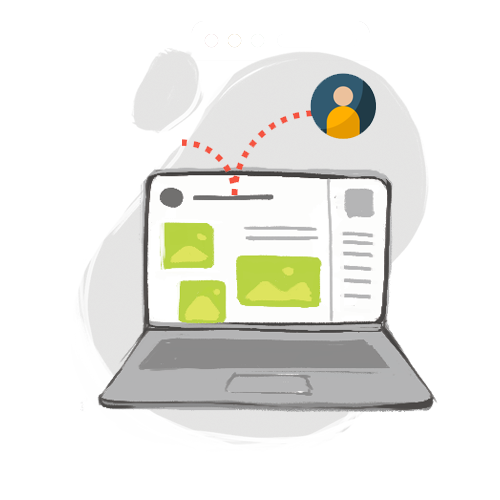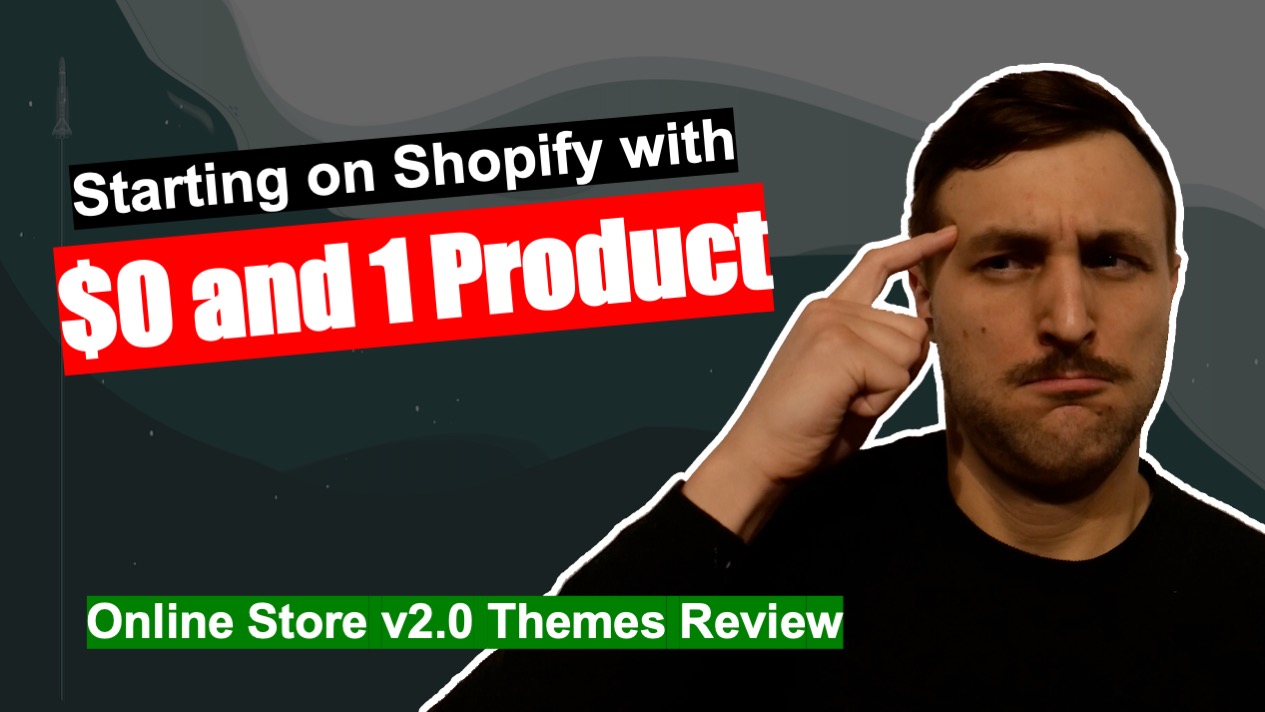Make Sense of Bounce Rate To Boost Sales!

Introduction – Bouncing Across the Web
When you browse the web, consider how quickly you can navigate to a page, decide in a fraction of a second, “Mmmm… no.” Then, you repeat the same bouncy activity on a new site, hopping webpage to webpage until you finally find a landing page that catches your attention.
… What about all those pages you bounced through without a second thought?? What if your business ends up like that?!!?
That is why analyzing your online business’s bounce rate is so important!
This blog covers the basics of bounce rates, the percent of visitors who navigate from your site after seeing only one page. We’ll cover how to frame your bounce rate among other key analytics, as well as marketing strategies to reduce the bounce rate. Reduced bounce rate = increased sales, so it’s worth a quick look!
Bounce Rate: A “Bird’s Eye View” of Your Site Activity
It’s best to think of bounce rate as a general “top-down” web metric. While bounce rates do not tell the whole story of your site, they do give an interesting perspective on how many folks click through your page without thinking twice.
For optimizing your online store and increasing sales, it’s worth paying attention to a fundamental metric like bounce rate. Just remember it is only one piece of the Google analytics puzzle, so there is hope for your business even if it currently has a high bounce rate!
Key Steps to Improve your Bounce Rate & Increase Sales
With that said, below are key steps you can take today to improve your bounce rate and boost customer sales. Review to improve your online marketing savvy:
- Page load time
Starting off with a straightforward one here – your webpages should take no longer than 2-3 seconds to load! Why? Over half of visitors will bounce after a 3 second delay.
Run a quick test yourself on a device outside your network to see how quickly your site loads. You may to compress site data, reduce site redirections, streamline Javascript/HTML code, improve server infrastructure, or use a Content Delivery Network (CDN) to help boost up your page load time. User Google’s pagespeed tool linked here to check your load time! Sometime as simple as reducing the size of images on a page can improve its speed, so make sure to check your page load time out!
- “Let your webpages breathe”
Remember the example in the intro – browsing the web is usually a passive activity. Your site must cater to the visitor, not the other way around. If the webpage they land on is cluttered, they’ll say, “Oh geez, I don’t what I’m supposed to look at,” and move on.
Thus, it’s best to break up your webpage info. Do not be afraid of having some blank space in between content! In fact, it “lets the user up” to breath and gives them a second to process your site’s presentation.
- Use heat map analytics to see exactly where visitors’ eyeballs are first drawn
Heat map analytics can be a useful tool for showing exactly where visitors are drawn to most on your webpage. The heat map will “light up” orange/red, informing you where their eyes are first drawn to. Knowing that key info helps you reconstruct the user experience from their point of view. Doing so is a surefire way to increase your online sales!
- Cut down on excessive widgets and sidebars
Having key widgets or sidebars helps bring a helpful dynamic element to your site. However, some businesses use them to the point it overtakes and distracts from the actual content! Moreover, added sidebars could also contain Javascript or HTML errors that cause issues for users. Tactfully employ widgets, as they will potentially sap your customer’s attention away from placing an order.
- Give each webpage a central focus that funnels visitors to a sales deal
Help visitors keep their eye on the prize! Each webpage should contain a healthy balance of content and “call to action” buttons that funnel them along to the checkout page. In other words, make sure each webpage brings it back to your “bread and butter” for increasing sales.
- Clear, easy search bar that covers all your pages
The best-performing websites have an easy-to-use, fluid search bar that searches all content within the site. Think of it like constructing a “Mini-Google” that helps visitors sift through all the products and pages you have available! The quick the search bar loads as the user types, the more likely they are to purchase products and boost your sales.
- Optimize mobile versions of your online store for increased sales
Some Shopify owners think they are all set after setting up a “desktop” version of their site… but remember we live in the Instagram Era. You neeeeeeeeed to craft a mobile-friendly version of your store that effectively condenses your webpages down to a phone screen. This is why successful businesses research creating a separate “app version” of their product. They want to streamline the mobile user experience to boost their sales!
Conclusion – Ad360 is Here to Help Reduce your Bounce Rate!
If you feel implementing any of the above-mentioned ideas sounds too time-consuming, reach out to try a free demo at Ad360 today! We offer a free evaluation of your website’s metrics, providing concrete, actionable marketing solutions for your site. That way, you can be happy, productive, and successful while you increase your sales online 😊 Cheers, we hope that you enjoyed this breakdown of bounce rates!
Starting with $0 and 1 product on Shopify

Several persons recently asked us what Shopify themes they should be using and how much it would cost them.
In particular, one person was wondering which theme would suit well a single product store.
The great news is that Shopify has a wonderful Theme store, with themes of all kinds. Regardless of your industry, product, or type of business, we’re sure you’ll find several that you’ll like 🙂
There are nice themes for all sorts of tastes, with varied aspects and designs. Some themes need to be purchased for a once-off fee, but there are Free themes available as well!
In particular, there are 6 great free themes that use the latest architecture called v2.0 Online Store themes. These 6 themes are definitely a great place to start!
In addition to being beautiful and performant, the v2.0 Online Stores by Shopify are very flexible and adaptable, making them good choices for single product websites. Indeed, you want to compensate for the lack of collections by adding more info and context around your brand and product benefits.
In the video below, we’re reviewing the Dawn, Taste, and Sense themes with the angle of how to adapt them for a single product website and we’re showing at the end of the video a concrete example of a great single product website.
If you’d like help setting up a store, or want a more in-depth analysis of your advertising setup / targeting options / campaigns data, feel free to book a call with Ad360!
4 Keys to Unlocking SEO on Shopify

And why it’s VITAL for Sales Growth!
In part III of our “Search Engine Optimization” series (part I and II linked here), we distill the top 4 “keys” to boosting sales with SEO. Here, you’ll find the breakdown of actions you could take today to increase your store’s visibility on search engines like Google – and they aren’t complicated! SEO may not be rocket science, but it does take strategic, effective marketing strategies on your part.
Read below for the 360 degree, step-by-step guide to learn the practical application of SEO strategy!
1. Favicon design
Favicons are those little picture designs that appear in the corner of your website tab. Some popular ones are the multicolored “G” when on Google or the red “play button” icon on Youtube.
These little guys may seem unimportant, but they carry a lot of weight for SEO ranking! Simply put, they provide brand awareness, credibility, and customers an easier way to recognize your site. Even if you have incredible goods in your store and provide top-notch service, customers subconsciously judge you right away if you don’t have a favicon like other sites.
Picture a dilapidated, old storefront – looks like a tornado just hit it. Even if the goods inside are amazing, and the store owner is a peach of a guy, chances are you won’t go in! It looks too worn-down on the outside. You make a snap judgement to move on.
That’s exactly what will happen to your store without a favicon! Get one designed asap to increase sales to your Shopify store.
2. Descriptive heading tags for well-organized site categories
We’ve mentioned in an earlier article the importance of descriptive heading tags to better organize your site’s web pages. Here’s why that is so essential. Not only do users feel better browsing, Google’s “crawl” software won’t get confused indexing your site. The clearer the web page headings and the better classification of your info, the more SEO-friendly Google will consider your site… and you will be rewarded with a better ranking 😊
Sometimes, these headings are referred to as “H tags.” Make sure to keep your ducks in a row when building the content on each page. It should always start with a clear, descriptive, but not-too-wordy title! That’s a major key to growing your Shopify sales.
3. Detail meta and product descriptions
On top of good headings, remember that breaking up your info with easy-to-read product descriptions is essential for SEO best practices. If you have any product listed on your site unaccompanied by at least a few lines of descriptive text, you are doing your online business a disservice!
Make sure you remember that new potential customers browsing your site (as well as Google’s web crawlers), are not experts on your industry like you. If you can find a way to give them good information, segmented into different tabs on the product description, you give yourself the best chance to land on the first page in Google rankings.
4. Research backlinks through Google Search Console
This final key may be the most difficult to implement, as it involves some pretty serious market research: backlinks. Backlinks are essentially hyperlinks that connect your site to another. Consider when you look for, say, a new toaster online. You find a site that lists the “top 10 toasters,” and there are hyperlinks leading to each option – those businesses successfully have been “backlinked,” linking them to more web pages across the web and increasing their visibility.
Now, when starting off green, finding the right sites to reach out to for a backlinks “shoutout” can seem pretty daunting. So, we recommend starting by checking out Google Search Consoles information on backlinks here. Make sure to check out what backlinks competitors have, and from there, you can begin your own marketing campaigns to increase the number of affiliate sites that offer a “backlink” to your Shopify store. More quality backlinks, more sales for your Shopify store 😊
If you feel you would benefit from some SEO expertise to set up your store for success, reach out to try a free demo from Ad360 today! We can provide a free consultation to evaluate how effective your SEO practices are, and what we can do to bring you up the Google ranks 😊 Cheers, we hope you enjoyed the 4 keys to SEO success!
The Importance Texts for Customer Growth

Focus on Textual Descriptions for Search Engine Optimization
Business owners agree there is an element of excitement in designing a brand-new Shopify site! They can pour their passions into the web page’s presentation, and digital advances have made it as simple as “cut & paste” to add all kinds of dynamic elements to the site: pictures, slideshows, videos, and interesting graphics that “pop” off the screen.
Be aware that, without a couple lines of descriptive text, audio-visual elements go completely unnoticed by search engines like Google. They won’t “pick up” what your store is putting down!!
We’ve mentioned in a previous blog on SEO (link here) that Google’s “web crawling” software, vital for a website’s ranking, does not do a very good job analyzing the “purpose and place” of pictures and videos. Every time you leave you, say, a picture of your product, without a meaningful textual description, it will be missed by Google’s ranking software, and your website’s visibility will suffer.
Breaking Down Where & When to Add Text on Your Site
To keep it simple, Ad360 wants to provide a 360° view on the most important places to add text for boosting sales. That way, business owners can quickly spot where they need to add full text descriptors to make their site more Google-friendly. We know that can sound silly, but strategically placing text descriptions gives you the best chance to be on the coveted “first page” of Google search results.
i. Meta text
You know those little “preview” descriptions that pop up when you search something up on Google? That is meta-text, a tagged part of your webpage that Google recognizes as providing a good “glimpse” of what your web page offers users.
ii. Webpage Titles
It may seem redundant while you type them out, but every web page users click through should have clear titles and subtitles. Even if it looks a bit silly to you, users who have never browsed the site – and Google’s “web crawling” software – will greatly appreciate the clarity!
iii. Product Descriptions
We at Ad360 are always a little shocked how many visually-stunning sites we come across… that totally blow off product tags and product descriptions. We would highly recommend having at least one sentence – like a caption – for every product preview, and then full descriptive text when the user clicks through to view the product in closer detail.
For example, if selling a gold bracelet, the caption with the product picture could read, “24 carat gold bracelet, sourced from ethical vendors and made with adjustable links for all wrist sizes.” When the user clicks through to view the product, give them a novel! It is best to break the text up into tabs, but those full text descriptions to accompany your pictures and products will boost GEO rankings and grow sales far more efficiently.
iv. Branding Descriptors
Marketing research makes clear that, with the seemingly endless commerce options available to online customers, it pays to include descriptive text that “fills in the human picture” of who you are as a business, what you stand for, and the values you hold dear. As an example, having a strong “About Me” text page correlates to increased sales, as does stating how your store supports its core values. Are you an animal lover? Have a page where customers can make a donation to your chosen charity. Text elements that give a fuller picture of your brand’s core values go a long way in customers positively identifying with you!
V. Reviews
Make a page that lists your favorite reviews! It adds more dynamic text to your site and provides a sense of “social validation” that new customers, who, after reading a few positive reviews, feel they are making a good decision
It’s Ok Ramble – Lean Toward More Textual Description, Not Less
Here is the main takeaway: any picture, video, link, or product should come with full descriptive text, so both customers and google crawling software can make sense of your website! Always lean toward “more full description,” not less. If it starts to feel a bit redundant or like you’re rambling, that’s ok! Google’s “web crawling” software will reward you with a higher ranking and more traffic to your online store. You can edit down the parts that confuse customers, but remember – you are structuring your site for optimized web success! If you feel unsure about your current text descriptions or feel like professional guidance may give your online store a lift, reach out and try a free demo from Ad360 today! We provide a free 30 minute consultation that can evaluate your current text descriptions, pointing out where improvements can be made for optimal sales success 😊
What is Search Engine Optimization?

What Exactly is SEO? What Value Does it Add to my Business?
Google defines Search Engine Optimization (SEO) as “making your site better for search engines.” Put another way, SEO are all the changes to your text that make your site “ping” on Google’s algorithm when users execute a search!
Crawling for New Content – How Google Discovers your Site
How does it do that, you ask? Well, Google didn’t become a tech powerhouse for no reason. Google employs automated “web crawlers” that look for new/updated web pages based on how the site connects to the rest of the internet… hence the term “internet.” Basically, Google finds your page based on how it interlinks and interconnects to the rest of the web!
Indexed for Info – Google Programs Analyze Webpage Text to Evaluate Content
After Google discovers that your site exists among the 50 billion online web pages (congrats!) Google “indexes” the site’s content, using software to try and figure out the “purpose and place” of your online business. To check if your site is properly indexed on Google, type in “site:_________” and past your url into the blank.
There you Are – Having Google List Businesses on Search Results
After figuring out the “purpose and place” of your online site, Google will begin listing your business. The user’s location, language, device, and previous search history all play a role in what pops up for them, but those factors are out of your control.
It’s time to put in stark terms how vital SEO is for growing your business!
Introduction – Tell me WHY SEO is Important
If you ever question, “Why is it important for my business to rank on Google anyway,” consider this fact:
71% of all online users click through from the “first page” search results
With that in mind, it’s essential for any online business to identify the most commonly searched keywords/phrases when customers are browsing for your line of products. If you are serious about leveraging online search engines to optimize your sales growth, learning to “move up the rankings” through SEO is a must! Organic SEO growth is more effective at growing sales and driving traffic to your website than virtually any other online tool. Remember that there are over 5 billion searches conducted on Google per day. Being at the top of the list for the searches pertaining to your business… you can see how that might spur sales growth!
Picture This – Example of SEO’s Utility for Growing Sales
For a quick hypothetical – picture you’re a custom soap maker. You’ve taken a 360 degree view of your online marketing, and every time a user searches the phrases, “custom soap,” “boutique soap,” or “soap for sensitive skin,” your site pops up as one of the top three results. Just by that remarkable visibility alone, you’re going to receive a steady, consistent stream of sales no matter where else you advertise. Think about it! Google’s search engine is literally advertising for you!
However, to get to a place where SEO is, in a sense, doing your promotional work for you, it takes in-depth research and serious legwork to perfect your site’s key phrasing and text. Every line of business needs a wholly unique approach to their SEO, while still hitting the most relevant key phrases universally searched online… this part is easier said than done.
How Online Business Make Quality SEO Webpages
Making unique, engaging online content involves some artful human ingenuity, but there are specific metrics and guidelines to follow for how you structure that content to best optimize search results.
- Aim to be descriptive as possible with all titles and headings
No need to be wordy, but picture a software crawler… it’s not as smart a human! You need to be really clear with titles so the crawler software goes, “Oh! I get that!” You’re not just writing for your customers – you’re writing for the online ecosystem as a whole.
2. Make Each Webpage Stand Alone as a “Complete” Entity
We love a phrase Google uses when giving the 411 basics on SEO, “Google is smart, but we can’t guess what you don’t tell us.” It’s easy, as a business owner, to assume the folks reading are making the same leaps in logic you are… but they aren’t! Neither are Google’s programs. Give a logical rundown of your entire business offerings; don’t assume Google gets what you imply. Even if it seems painfully obvious to you, give Google a break – it’s sifting through 50 billion webpages!
3. Be Topical, Be Up-to-Date
Show your business can grow and change with the seasons – think holiday bundles and special deals of that nature! Those updates keep your business moving up the search queue, as Google will record, “These guys are with the times, maaaan.” We’re pretty sure that’s how Google software talks when no one is listening 🙂
4. USE TEXT!
Let’s start by acknowledging how cool it is to be able to share and upload pictures/videos with one click – memes have straight up changed the world. HOWEVER! When it comes to growing your sales through SEO, Google software still understands text formats more effectively than others. While having an aesthetically pleasing and dynamic webpage, complete with aural-visual elements, is highly recommended, it should not come at the cost of accompanying text. Having clear textual complements to any picture and video on your site will benefit your business greatly in terms of growing sales. Don’t have any picture/video without at least a little caption of explanatory text attached!
Most Important Web Elements for your Site’s SEO Rank
To give you a 360 degree view of SEO, we thought we’d leave readers with a list of all the design, web, and marketing research factors that improve your site’s “searchability” for boosting sales:
- Site content
- Site structure/Web Page layout
- Intersection with online ad campaigns
- Keyword research (e.g. – Term frequency-inverse document frequency analysis)
- SEO development
- Precision marketing to specific market “niches” or geographic locations
Modifying a single keyword/phrase can be the difference between Google finding 10 million or 100 million results. Market research on these keywords, therefore, are essential to aligning your online business with the most precise, potent keywords related to your industry!
Conclusion: Using the Right Tools for SEO Sales Success
We know that it feels a bit overwhelming that all these different factors play into SEO. Some business owners have all the savvy on their products they ever need, but figuring out the most SEO-friendly text to convey the value and purpose of their services becomes a whole challenge in itself.
If you feel your business would benefit from 24/7, 360 degree support, reach out to try a free demo from Ad360 today! As a proud Google partner recognized for our ability to maximize company sales, Ad360 has all the tools, analytics, and organizational expertise to push your business to the top of the Google chart 😉 Drop us a line today for a free SEO consultation – we look forward to your future sales success.